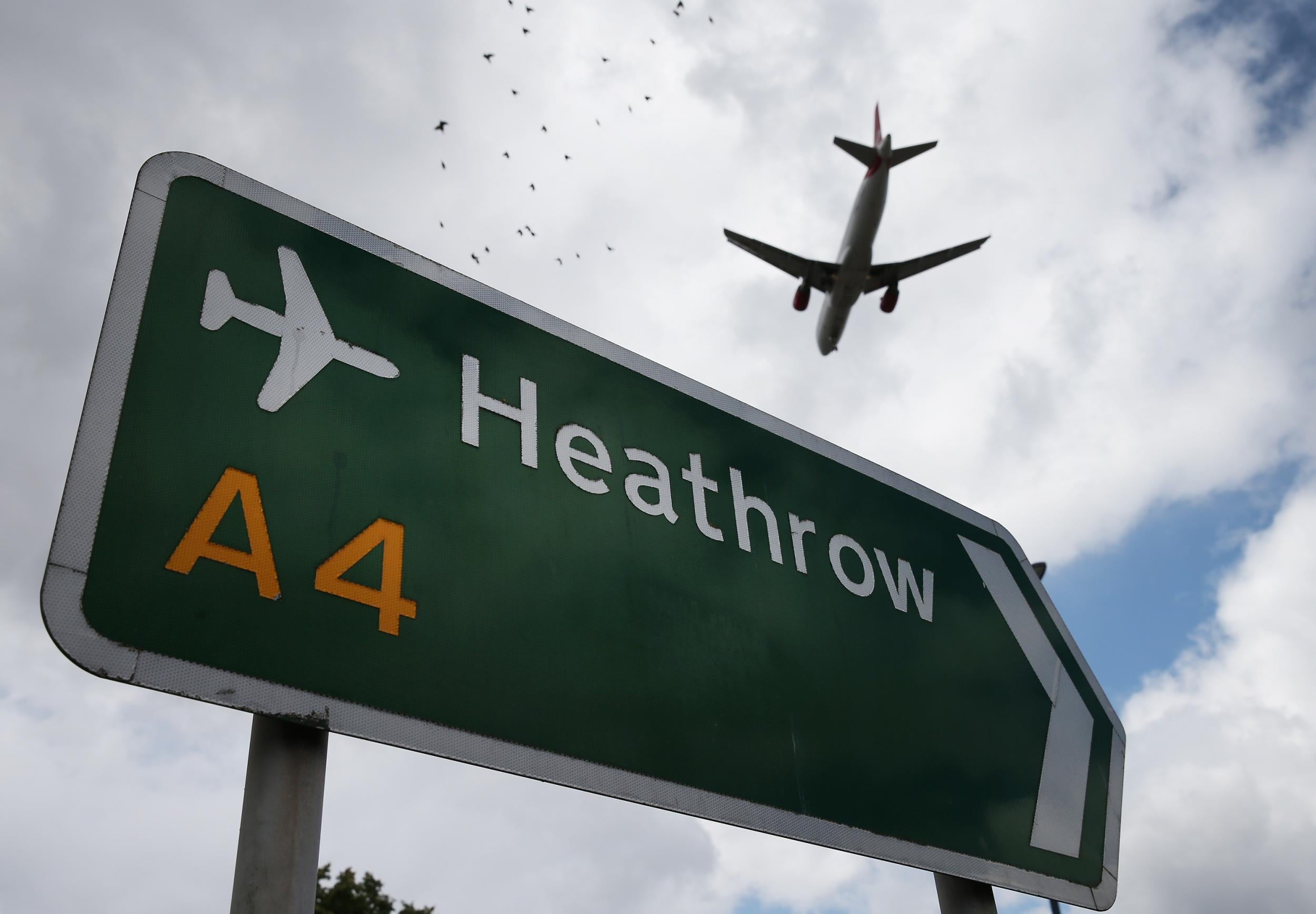Air Force: a novel solution to the Heathrow or Gatwick new runway conundrum
Flybe's chief executive Saad Hammad reckons an RAF air base provides the perfect temporary solution until the Heathrow-Gatwick runway debate is resolved. Simon Calder explains

Whether you are a frequent user of the London airports, or you go out of your way to avoid the capital’s congested and complicated aviation system, you probably think you know how many there are.
Heathrow, Gatwick, Stansted and Luton are the big four. Well below these in passenger numbers are London City – the business traveller’s favourite, except when protesters close the runway – and plucky Southend, whose excellent rail link to the City of London justifies its inclusion.
I won’t offer the same courtesy to “London Oxford Airport”, which claims to be located “40 miles to the north-west of the Greater London area”. That’s if you measure the distance from the furthest edge of Uxbridge, the outer limit of the capital. Nor do I concur with the Kent airport of Lydd when it self-describes as “London Ashford,” since it is 65 miles from the former and 10 miles from the latter.
So that’ll be six airports, right?
Well, according to the chief executive of Flybe, there should be seven. Saad Hammad is not suggesting a new-build in the Thames Estuary, but something much easier to achieve: opening RAF Northolt to scheduled traffic.
The air base is hemmed in by the A40 to the south, the Tube to the north, and suburbia all around. It is used by a mix of air force flights and business aviation. But, says Mr Hammad, his airline could use Northolt to provide temporary extra scheduled capacity until a new runway is built at Heathrow or Gatwick.
“We can connect Northolt efficiently to the regions,” said Mr Hammad. “It’s available right here, right now.”
Businesses in the immediate vicinity of “NHT” (to use its official code), and their clients, would no doubt welcome a network to key UK cities. The main aim, though, is not to create another business airport to the west of the capital, mirroring London City in the east – but to provide extra domestic connectivity to Heathrow, which is six miles south of Northolt.
Airports such as Liverpool, Newquay and Teeside used to have links from London’s busiest hub, but those have been squeezed out as the value of slots has risen. The idea is for Northolt to act as a temporary third runway for Heathrow, albeit with a slightly tricky road connection.
What, though, about the local residents? Mr Hammad told me: “We’ve made a proposal to the government to operate flights to Northolt within the movement limits today.
“The only people who would lose out are the wealthy few who fly in and out of there in noisy private executive jets.”
The closest equivalent I can find to the Heathrow-Northolt concept is in Madrid, where Terminal 4 is a good three miles from the original three terminals. The Metro connection actually stops at the pretty village of Barajas on its way between the two airport stops.
The official Minimum Connecting Time specified between flights where a change of terminals at Madrid is required is two-and-a-half hours – plus an extra 15 minutes if you are going to or from T4S, the satellite that feels so remote you would be forgiven for thinking you may have touched down on the moon.
A Northolt-Heathrow connection should surely be no more protracted than that? But the Davies Commission on airport expansion considered this issue. The panel members were unconvinced “that there is a credible solution for providing a transfer service between RAF Northolt and Heathrow”.
For Mr Hammad, though, NHT is a good temporary fix: “I’m happy to move out of Northolt as soon as new runway capacity is built elsewhere, so long as we get available and affordable slots.”
The government is expected to rule shortly, 15 months after the final Davies Commission report was published, on where that capacity should be.
Join our commenting forum
Join thought-provoking conversations, follow other Independent readers and see their replies
Comments
Bookmark popover
Removed from bookmarks